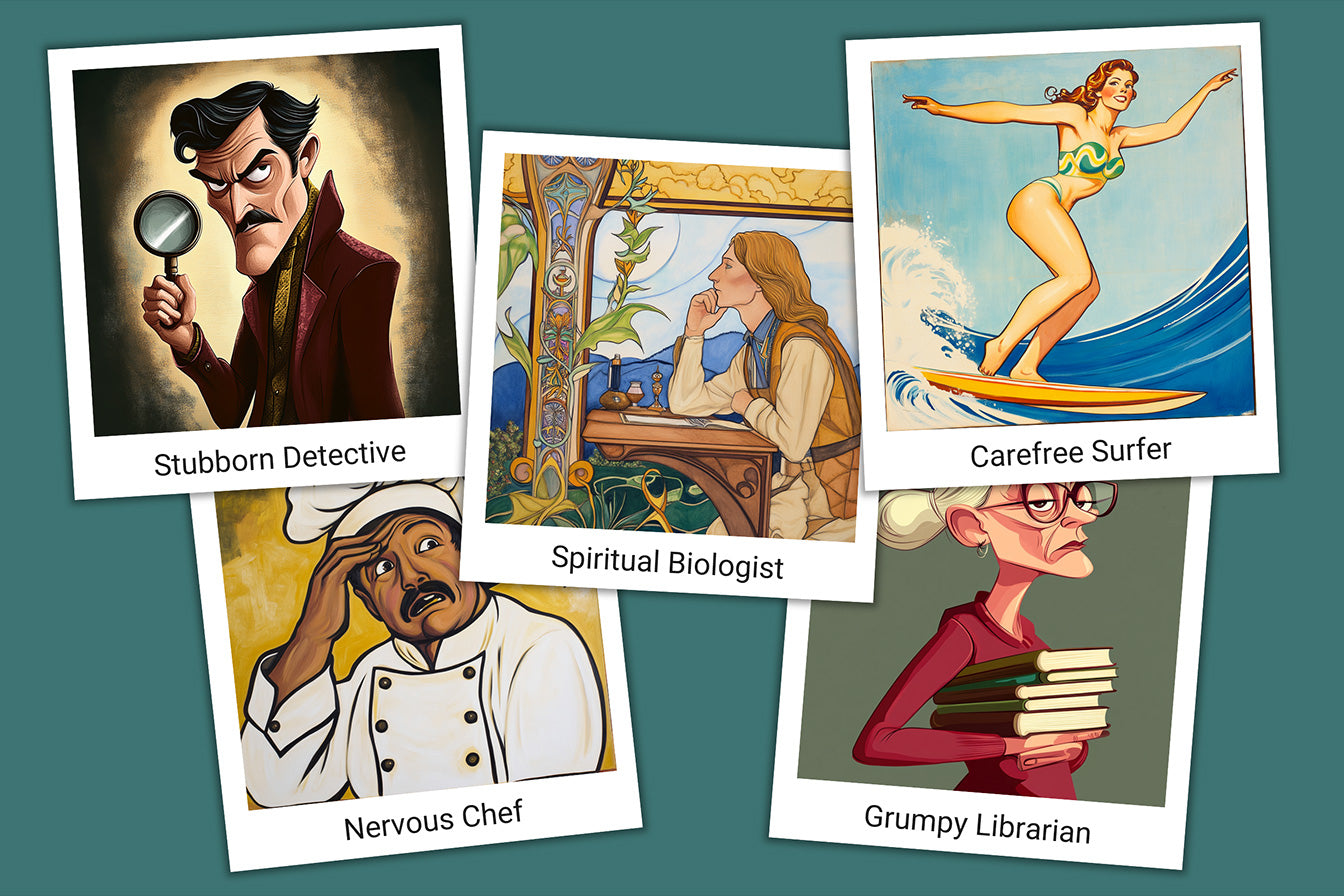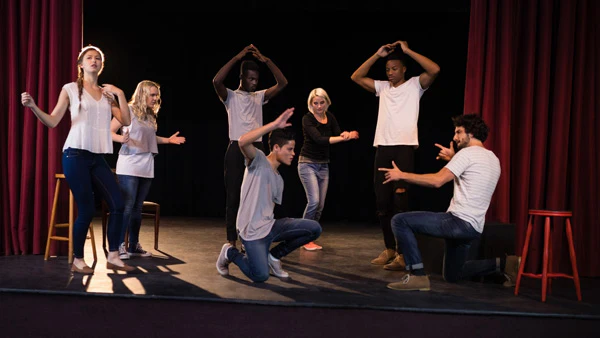Purpose
This exercise encourages participants to develop non-verbal communication skills and creative expression by focusing on the emotional and relational significance of objects. By interacting with a random object in an improvised scene, participants will explore the power of body language, facial expressions and subtle gestures to convey emotion and meaning. This exercise builds skills in non-verbal communication, emotional expression and creative storytelling.
Objective
Participants are each given a random object and must create a short, improvised scene where the object is central to the story. They must convey an emotion or relationship with another participant, using only body language and interaction with the object. No dialogue is allowed initially.
What You Need
- A variety of random objects such as a:
- Book
- Spoon
- Scarf
- Key
- Toy
- Glasses
- Cup
- Umbrella
- Pen
- Hat
- A space large enough for movement
Setup
- Explain that participants will be given a random object and must use it to communicate emotions or relationships non-verbally. The focus is on body language, facial expressions and interaction with the object to tell a story or convey meaning.
- Randomly give each participant an object. Encourage them to spend a few moments examining the object and thinking about how it could be central to a story or relationship. Emphasise that the object doesn’t have to be used literally. A spoon doesn’t have to be for eating—it can represent anything based on their creativity.
- Group participants into pairs. If there is an odd number, one group can have three participants, or one person can act as an observer and rotate in later.
- Instruct the participants to create a short scene that lasts about 2 minutes where the object is central. They must convey a specific emotion or relationship with their partner using only their interaction with the object. No words are allowed. You can optionally set the emotion or relationship for this exercise such as anger, joy, nostalgia, tension or friendship. Alternatively, you can let participants decide for themselves.
- Allow groups 5 minutes to work with their partner and the object, exploring different ways of communicating the emotion or relationship through body language, facial expressions and movement. Encourage them to experiment with how they can ‘act through’ the object by holding it, moving it, passing it to the other person, etc.
- Have each pair perform their scene in front of the group. As they perform, the rest of the group can observe and interpret the emotions or relationship being conveyed.
- After the initial non-verbal scene, you can repeat the exercise, allowing participants to add dialogue this time. This will help them see how their initial non-verbal communication can be enhanced with words. This doesn’t have to be a lot more than a few improv sentences.
- After each performance, engage the group in a discussion about what emotions or relationships they interpreted, how the object was used creatively, and how body language influenced their understanding of the scene.
Timing
Explaining the Exercise: 5 minutes
Activity: 5 min to prepare scenes + (2 min per scene x number of groups) = 15 minutes for 5 groups
Optional: Repeat with dialogue (10 minutes for 5 groups).
Group Feedback: 10 minutes
Discussion
After the performances, lead a group discussion with the following questions to guide the conversation:
- How did the object influence the way you expressed the emotion or relationship in your scene?
- What did you find challenging about communicating without words? How did you overcome this?
- How did your partner’s body language and interaction with the object affect your own performance?
- How was your interpretation of the scene shaped by the way the object was used?
- For those watching, what emotions or relationships did you perceive from the scene? Were they clear or ambiguous?
- How did adding dialogue (if used) change or enhance the scene compared to the non-verbal version?
- What can this exercise teach us about the power of non-verbal communication in everyday interactions?
Soft Skills Training Materials
Get downloadable training materials
Online Train the Trainer Course:
Core Skills
Learn How to Become the Best Trainer in Your Field
All Tags
Training Resources for You

Course Design Strategy
Available as paperback and ebook

Free Training Resources
Download a free comprehensive training package including training guidelines, soft skills training activities, assessment forms and useful training resources that you can use to enhance your courses.

Our Comprehensive Guide to Body Language

Train the Trainer Resources
Get Insights - Read Guides and Books - Attend Courses
Training Materials
Get downloadable training materials on: Management Training, Personal Development, Interpersonal Development, Human Resources, and Sales & Marketing














1 comment
raghavan
acting through objects, please provide me guidance.thank you
Leave a comment
All comments are moderated before being published.
This site is protected by hCaptcha and the hCaptcha Privacy Policy and Terms of Service apply.